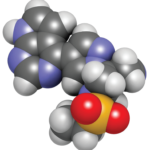
SAN FRANCISCO—When it comes to slowing the progression of structural damage in rheumatoid arthritis (RA), researchers continue to explore the various strategies to inhibit the inflammatory response. In this quest, the JAK (Janus kinase) inhibitors, which interfere with the JAK-STAT signaling pathway, represent a viable new tool in the clinician’s armamentarium, said Joel M. Kremer, MD, director of research and director of The Center for Rheumatology at Albany (N.Y.) Medical College.
Dr. Kremer, who is also the Pfaff family professor of medicine at Albany Medical College, led off the presentations at the 10th Annual Medical and Scientific Meeting of the California Rheumatology Alliance held at the Hotel Nikko on May 17. Work with this family of enzymes has been “fascinating,” Dr. Kremer said: Many unanswered questions remain to unravel the mechanisms of JAK inhibition, and yet clinical trial results have already shown efficacy for this approach. The compounds have therapeutic applications as targeted immunomodulators and disease-modifying therapies in RA.
The Research
Dr. Kremer focused the majority of his talk on his own and others’ investigative and clinical experience with oral tofacitinib, formerly known as CP-690, 550, and the first JAK inhibitor to reach clinical trials. In kinase assays, tofacitinib inhibits JAK1, -2 and -3 and, to a lesser extent, TyK2; however, in cellular settings, it more specifically inhibits signaling associated with JAK3, and to a lesser extent, JAK1 and JAK2. Dr. Kremer also covered JAKs in development, including baricitinib, GLPG0634 and VX-509. He contrasted their target JAK molecules with the clinical and side effect profiles of these agents.
Tofacitinib was approved by the FDA for use in RA for patients who have had an inadequate response or intolerance to other therapies. Dr. Kremer has investigated its use in RA patients as a monotherapy and in combination with background methotrexate (MTX). Early on during Phase IIB trials, efficacious ACR20 responses were demonstrated.1,2

“We expected these drugs to work, and they do,” Dr. Kremer reiterated.
He then explained drawbacks for which clinicians should be prepared. As patients get better, he said, clinicians may also see changes in laboratory parameters, such as increases in low-density lipoprotein (LDL) cholesterol. “So what are we doing,” he asked rhetorically, “giving a drug [that] increases LDL, [which is] implicated in one of the most common comorbidities that we treat—cardiovascular disease? Well, like a lot of things we do, it’s a very complex story.”

